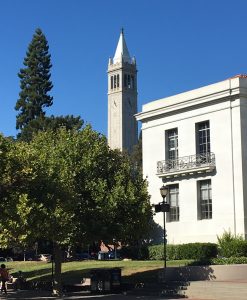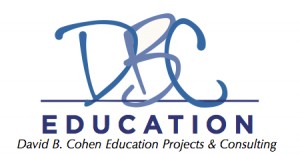I recently had a Monday afternoon to pass across the San Francisco Bay, about 40 miles from my home, and put out some feelers to various friends in the area whom I haven’t seen in a long while. It turned out that two friends were free that day, and coincidentally, both are college professors. While my main purpose in reaching out was simply to connect with friends, the interesting result for me was the opportunity to have some extended conversations about teaching and learning at the college level.
In high schools, we largely (but not solely) strive to prepare our students for college, and we are guided by a combination of standards (Common Core or state standards, the College Board’s Advanced Placement program, the International Baccalaureate), local initiatives and collaborations, and personal experience. It’s the personal element that introduces so much potential variability and doubt. When we talk among teachers about “college preparedness” we come from many different perspectives formed at a variety of schools and across four decades. We also know our students who go on to college will attend a wide variety of schools and study across many different disciplines. I always find it reassuring when our graduates come back to visit and tell us they were well-prepared.
So that’s the view from the high school side. What do the college professors have to say about students’ needs? My first conversation of the day was with Clifford Lee from St. Mary’s University. When I first knew Cliff, roughly ten years ago, we were both high school teachers. We hadn’t seen each other in about seven years, during which time Cliff completed at Ph.D in Education at UCLA, and joined the faculty of St. Mary’s College. Over lunch, we discussed a number of topics in teaching, but what stuck with me the most was the value he still found in his high school teaching experience. While teaching differs between high school and college levels, there are commonalities for which Cliff is well-prepared. The instructor still bears responsibility for the climate of the classroom, and must understand how to keep the attention of students. An experienced high school teacher also has a variety of strategies for ensuring that students engage productively through high-level discourse around the curriculum.

U.C. Berkeley’s Campanile bell tower and Sproul Hall.
Later in the afternoon, I had a coffee with my high school classmate Scott Saul, an English Professor at U.C. Berkeley. It’s always a pleasure to talk about Scott’s work because he’s now teaching in the same department where I completed my B.A. Though Scott doesn’t have the high school teaching background, his college teaching methods and strategies have veered in directions secondary teachers would describe as project-based learning. The most recent example is the work produced by Scott’s undergraduate honors seminar on the history of the Bay Area in the 1970s. (It’s probably worth noting here that Scott has a background in history as well as English, and that the small class size offers some unique opportunities for innovative teaching). The class engaged in a process of research and analysis, source annotation and curation, to produce a digital historical archive, The Berkeley Revolution. Like some of the best PBL happening in K-12 schools, the project defied academic compartmentalization, required collaboration, had an unknown outcome, and an authentic audience.
Another essential aspect of this kind of work, one that Scott and I both wrestle with, is the decentralization of the teacher. Students will not make the choices we always think they should make, will not reach the conclusions we think they should, and will not present their findings as we might hope. Those differences represent both the promise and pitfalls of PBL. As teachers, we always need to provide a vision, a sense of direction, some models, guidance, and standards. And yet, to maximize the learning opportunity, we also need to allow flexibility, creating situations where students have to use their developing skills and understanding. If we exert too much influence or control, then the “learning” is reduced to an exercise in imitation and compliance. Sometimes our students produce work that’s different and better than we had hoped for, and sometimes we’re left with a lingering sense of what could have been.
Scott and I both noted that, compared to the way we felt in high school, our students come to their learning with clearer pre-formed opinions and a well-developed sense of voice. They’re used to having information and strong feelings and being able to share instantly and broadly with people who largely agree with them. We want to find ways to introduce more patience, some uncertainty, some greater inclination to allow oneself to be persuaded, even confused by contradictions. It’s vital to be open to re-evaluating information and positions, to concede one’s limitations and pursue better information and wider ranges of viewpoints.
Now, my sample size was extremely limited, so I should also beware of over-generalizing in my conclusions. But, at the end of the day, I did have a reassuring feeling that there are some valuable continuities between high school and college. Professors like Cliff Lee and Scott Saul are dedicated to making the future of college something that evolves with our capacity to access and process information and sources, and produce new knowledge that is applicable in the future society we’re building together with our students.
Originally published June 30, 2017 at my EdWeek Teacher blog, Capturing the Spark.
Capturing the Spark: Inspired Teaching, Thriving Schools – learn more about my book by clicking the link, and for education organizations ordering multiple copies inquire by email for significant discounts.
